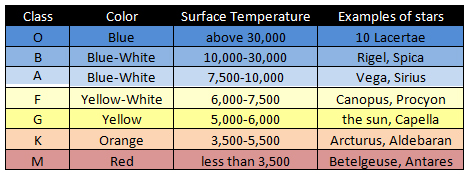
As you know, the Sun is a star. It is about 100 times bigger than the Earth. The sun is considered a medium-sized star and is many thousands of times closer to the Earth than any other star.

![]() Watch this short video to learn more about the Sun.
Watch this short video to learn more about the Sun.
Source: Characteristics of the Sun, Teacher Domain
Our Sun is a yellow dwarf star. It is classified as a G star, based on its color and surface temperature. G stars have surface temperatures between 5,000 and 6,000 Kelvin. G stars' light is generated by the fusion of hydrogen into helium.

Our Sun is a main sequence star. It is considered "middle aged" and has been in existence for approximately 4.3 billion years. The Sun will most likely last another 7 billion years. After that, it will expand and become a red giant star and then shrink back down and become a white dwarf star.
Although the Sun may appear to have a solid surface, it is not solid. The Sun is made up of several different layers.
![]() Click on the words below to learn about each layer.
Click on the words below to learn about each layer.